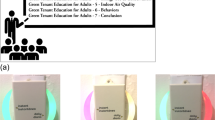Abstract
Building occupant presence during varying periods is crucial to the performance studies of buildings and city regions. However, the understanding of the building occupancies on the university campus remains limited. To address this gap, our study employs field measurements, payment records, course arrangements, and building access systems to depict the occupancy patterns of the canteen, dormitory, library, and teaching and lab buildings during weekdays and weekends. We found that the occupancy rates across different buildings are somehow interrelated, given that the total number of occupants on campus is generally constant. Notably, dormitory occupancy rates tend to be low during the morning and afternoon course hours, which inversely correlates with the high occupancy rates in the teaching and lab buildings during these periods. Similarly, canteens experience surges in occupancy during meal times, which coincide with a decrease in library usage. Moreover, we established appliance operation schedules for dormitories through surveys and on-site investigations. Water dispensers and electronic devices were identified as the primary energy consumers for both male and female occupants, with desk-top fans and hairdryers being significant energy users for male and female occupants, respectively. These findings are essential for energy studies within a campus setting, underlining the importance of considering occupant behaviors on a regional scale.
Similar content being viewed by others
References
Abdelalim A, O’Brien W, Shi Z (2015). Visualization of energy and water consumption and GHG emissions: A case study of a Canadian University Campus. Energy and Buildings, 109: 334–352.
Azar E, Al Ansari H (2017). Framework to investigate energy conservation motivation and actions of building occupants: The case of a green campus in Abu Dhabi, UAE. Applied Energy, 190: 563–573.
Chen S, Zhang X, Zhu Y, et al. (2018). Analysis on the characteristics of dormitory electricity consumption in a university in Zhejiang Province. Architecture & Culture, (7): 179–180. (in Chinese)
Chen S, Lu M, Tan H, et al. (2019a). Assessing sustainability on Chinese university campuses: Development of a campus sustainability evaluation system and its application with a case study. Journal of Building Engineering, 24: 100747.
Chen S, Zhang X, Wei S, et al. (2019b). An energy planning oriented method for analyzing spatial-temporal characteristics of electric loads for heating/cooling in district buildings with a case study of one university campus. Sustainable Cities and Society, 51: 101629.
Cotton D, Shiel C, Paço A (2016). Energy saving on campus: a comparison of students’ attitudes and reported behaviours in the UK and Portugal. Journal of Cleaner Production, 129: 586–595.
Deng Z, Chen Y, Yang J, et al. (2022). Archetype identification and urban building energy modeling for city-scale buildings based on GIS datasets. Building Simulation, 15: 1547–1559.
Ding Y, Zhang Z, Zhang Q, et al. (2018). Benchmark analysis of electricity consumption for complex campus buildings in China. Applied Thermal Engineering, 131: 428–436.
Ding Y, Wang Q, Wang Z, et al. (2019). An occupancy-based model for building electricity consumption prediction: a case study of three campus buildings in Tianjin. Energy and Buildings, 202: 109412.
Ding Y, Han S, Tian Z, et al. (2022). Review on occupancy detection and prediction in building simulation. Building Simulation, 15: 333–356.
Doma A, Ouf M (2023). Modelling occupant behaviour for urban scale simulation: Review of available approaches and tools. Building Simulation, 16: 169–184.
Dong B, Liu Y, Mu W, et al. (2022a). A global building occupant behavior database. Scientific Data, 9: 369.
Dong B, Markovic R, Carlucci S, et al. (2022b). A guideline to document occupant behavior models for advanced building controls. Building and Environment, 219: 109195.
Dong Q, Ma Z, Sun C (2023). Occupancy of rooms in urban residential buildings by users in cold areas of China. Building Simulation, 16: 483–497.
Escobedo A, Briceño S, Juárez H, et al. (2014). Energy consumption and GHG emission scenarios of a university campus in Mexico. Energy for Sustainable Development, 18: 49–57.
Gul MS, Patidar S (2015). Understanding the energy consumption and occupancy of a multi-purpose academic building. Energy and Buildings, 87: 155–165.
Hax DR, Leitzke RK, da Silva ACSB, et al. (2022). Influence of user behavior on energy consumption in a university building versus automation costs. Energy and Buildings, 256: 111730.
He M, Pen H, Li M, et al. (2022). Investigation on typical occupant behavior in air-conditioned office buildings for South China’s Pearl River Delta. Architectural Intelligence, 1: 8.
Hegazy M, Yasufuku K, Abe H (2022). An interactive approach to investigate brightness perception of daylighting in Immersive Virtual Environments: Comparing subjective responses and quantitative metrics. Building Simulation, 15: 41–68.
Hu S, Zhang Y, Yang Z, et al. (2022). Challenges and opportunities for carbon neutrality in China’s building sector—Modelling and data. Building Simulation, 15: 1899–1921.
Hu S, Zhou X, Yan D, et al. (2023). A systematic review of building energy sufficiency towards energy and climate targets. Renewable and Sustainable Energy Reviews, 181: 113316.
Jiang Z, Deng Z, Wang X, et al. (2023). PANDEMIC: Occupancy driven predictive ventilation control to minimize energy consumption and infection risk. Applied Energy, 334: 120676.
Kim MK, Kim Y-S, Srebric J (2020). Predictions of electricity consumption in a campus building using occupant rates and weather elements with sensitivity analysis: Artificial neural network vs. linear regression. Sustainable Cities and Society, 62: 102385.
Legorburu G, Smith AD (2020). Incorporating observed data into early design energy models for life cycle cost and carbon emissions analysis of campus buildings. Energy and Buildings, 224: 110279.
Liu Q, Ren J (2020). Research on the building energy efficiency design strategy of Chinese universities based on green performance analysis. Energy and Buildings, 224: 110242.
MOE (1992). Spatial Area of Schools for Higher Educations. Beijing: Ministry of Education of China. (in Chinese)
MOHURD (2015). GB50189-2015: Design Standard for Energy Efficiency of Public Buildings. Beijing: Ministry of Housing and Urban-Rural Development of China. (in Chinese)
Nagpal S, Reinhart CF (2018). A comparison of two modeling approaches for establishing and implementing energy use reduction targets for a university campus. Energy and Buildings, 173: 103–116.
Nagpal S, Hanson J, Reinhart C (2019). A framework for using calibrated campus-wide building energy models for continuous planning and greenhouse gas emissions reduction tracking. Applied Energy, 241: 82–97.
Nakhaee A, Paydar A (2023). DeepRadiation: An intelligent augmented reality platform for predicting urban energy performance just through 360 panoramic streetscape images utilizing various deep learning models. Building Simulation, 16: 499–510.
Ocampo Batlle EA, Escobar Palacio JC, Silva Lora EE, et al. (2020). A methodology to estimate baseline energy use and quantify savings in electrical energy consumption in higher education institution buildings: Case study, Federal University of Itajubá (UNIFEI). Journal of Cleaner Production, 244: 118551.
Reinhart CF, Cerezo Davila C (2016). Urban building energy modeling—A review of a nascent field. Building and Environment, 97: 196–202.
UNEP (2020). 2020 Global Status Report for Buildings and Construction: Towards a Zero-Emission, Efficient and Resilient Buildings and Construction Sector. Nairobi, Kenya: Global Alliance for Buildings and Construction.
USDOE (2019). Building Energy Asset Score: Building Use Type Operational and Equipment Sizing Assumptions. U.S. Department of Energy.
Wei Q, Li Q, Yang Y, et al. (2022). A summary of the research on building load forecasting model of colleges and universities in North China based on energy consumption behavior: A case in North China. Energy Reports, 8: 1446–1462.
Wu W, Dong B, Wang Q, et al. (2020). A novel mobility-based approach to derive urban-scale building occupant profiles and analyze impacts on building energy consumption. Applied Energy, 278: 115656.
Xia D, Lou S, Huang Y, et al. (2019). A study on occupant behaviour related to air-conditioning usage in residential buildings. Energy and Buildings, 203: 109446.
Yan D, Zhou X, An J, et al. (2022). DeST 3.0: a new-generation building performance simulation platform. Building Simulation, 15: 1849–1868.
Yu C, Du J, Pan W (2022). Impact of window and air-conditioner operation behaviour on cooling load in high-rise residential buildings. Building Simulation, 15: 1955–1975.
Yuan J, Farnham C, Azuma C, et al. (2018). Predictive artificial neural network models to forecast the seasonal hourly electricity consumption for a University Campus. Sustainable Cities and Society, 42: 82–92.
Zhang C, Zhao T, Li K (2021). Quantitative correlation models between electricity consumption and behaviors about lighting, sockets and others for electricity consumption prediction in typical campus buildings. Energy and Buildings, 253: 111510.
Zhang J, Zhou X, Lei S, et al. (2022). Energy and comfort performance of occupant-centric air conditioning strategy in office buildings with personal comfort devices. Building Simulation, 15: 899–911.
Zhao T, Zhang C, Xu J, et al. (2021). Data-driven correlation model between human behavior and energy consumption for college teaching buildings in cold regions of China. Journal of Building Engineering, 38: 102093.
Zhu M, Pan Y, Wu Z, et al. (2023). Modelling method of interbuilding movement for campus-scale occupancy simulation: A case study. Building Simulation, 16: 461–481.
Acknowledgements
The paper is supported by the research programme “A research on the energy consumption features of the residential buildings in the Great Bay area of Guangdong” with program ID 202201010212 under the Science and Technology Programme of Guangzhou.
Author information
Authors and Affiliations
Contributions
Siwei Lou: validation, formal analysis, investigation, writing—original draft preparation, visualization. Zhongyuan Lin: resources, data curation, visualization. Yukai Zou: methodology, software, investigation. Dawei Xia: resources. Yu Huang: conceptualization, methodology, investigation, writing—review and editing, supervision, project administration. Zhuohong Li: data curation. Zhaowen Gu: data curation.
Corresponding author
Ethics declarations
Declaration of competing interestThe authors have no competing interests to declare that are relevant to the content of this article. Yu Huang is a Subject Editor of Building Simulation.
Ethical approval This study does not contain any studies with human or animal subjects performed by any of the authors.
Rights and permissions
About this article
Cite this article
Lou, S., Lin, Z., Zou, Y. et al. Investigation on occupant presence and appliance operation schedules for university campus in south China sub-tropical area. Build. Simul. 17, 301–318 (2024). https://doi.org/10.1007/s12273-023-1065-6
Received:
Revised:
Accepted:
Published:
Issue Date:
DOI: https://doi.org/10.1007/s12273-023-1065-6




